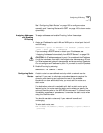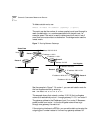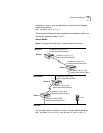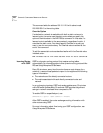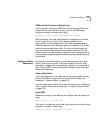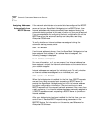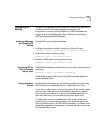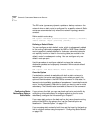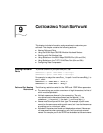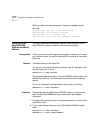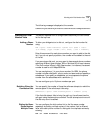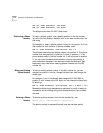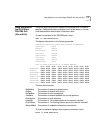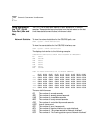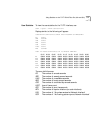
110 CHAPTER 8: CONFIGURING BRIDGING AND ROUTING
The IPX router ignores any dynamic updates or backup routes on the
network when a static route is configured for a specific network. Static
routes are recommended only where the network topology remains
constant.
Define a static route using:
ADD !<port> -IPX ROUte {&<remote network> | Default} [<network>]
<media address> <hops> [Override] [hdrfmt]
Defining a Default Route
You can configure a static default route, which is subsequently added
to the routing table and propagated by NRIP or NLSP. Once a default
route is specified, packets destined to unknown networks (networks
not explicitly known or listed in the routing table) are routed to the
default router for subsequent routing. You can configure only one
default route per port.
Use this procedure to configure a default route so that unknown
destination packets can be properly forwarded. Define a static default
route using:
ADD !<port> -IPX ROUte Default <media address> <hops>
Override Option
If a destination network is reachable with both a static route and a
learned route, the router uses the static route unless you specify the
optional Override value in the ADD ROUte command. In that case, if a
learned route is available, regardless of precedence, it overrides the static
route. You should specify Override for a path you want to use for route
redundancy. The Override value is entered at the end of the command.
Configuring Route
Redundancy Using a
Static Route
If your primary line fails, you can use a back-up line to route traffic by
configuring route redundancy.To configure a back-up line for route
redundancy, configure the line according to Chapter 7.
If you use a static route on the back-up line, but use a dynamic routing
protocol like NLSP on the primary line, use the Override option as
described in “Override Option” on page 110.
If you are using static routes for both lines, set the hops for the back-up
line to a higher number using the syntax in “Configuring Static Routes”
on page 109.




